

Ben Zachariah
CarExpert's top five ute reviews of 2025
6 Hours Ago
If you don't want to wait for the new Ford Ranger and want something rugged but not as pricey as the Raptor X, there's the FX4 Max.
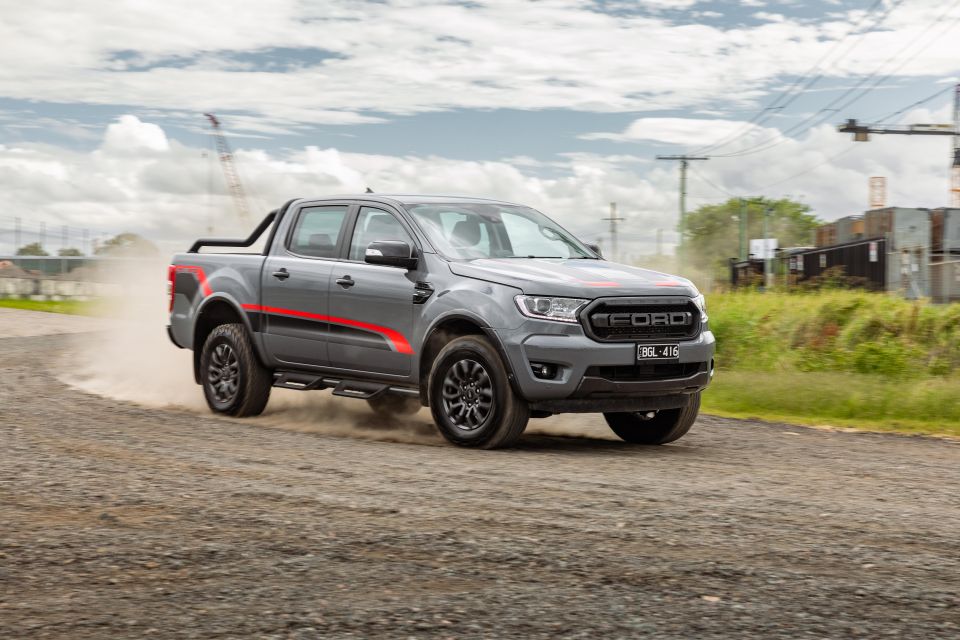
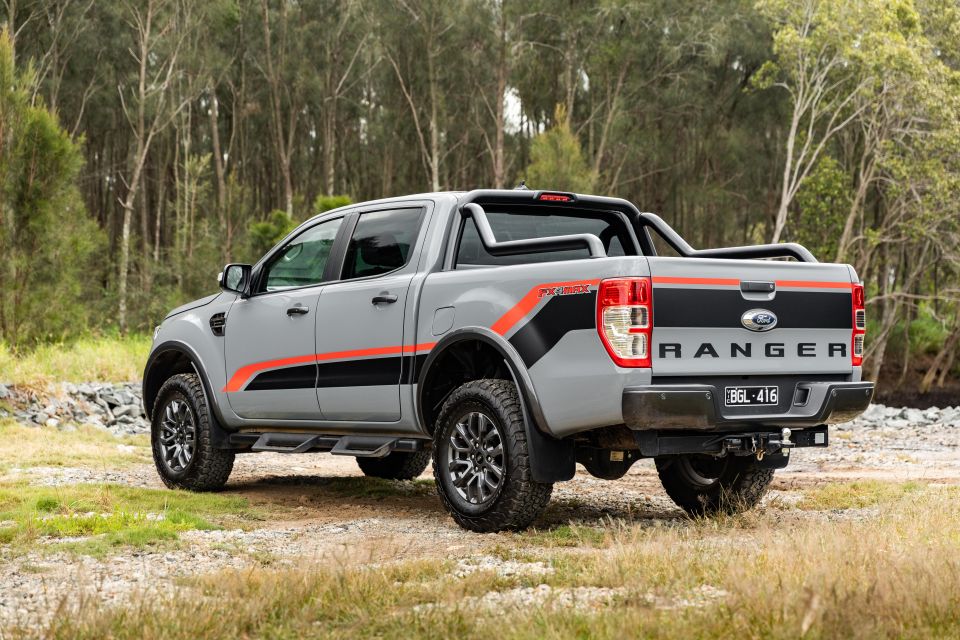

Quickly see how this car stacks up against its competition. Select any benchmark to see more details.
Where expert car reviews meet expert car buying – CarExpert gives you trusted advice, personalised service and real savings on your next new car.
It’s no secret there’s a new Ford Ranger coming soon.
The next-generation Thai-built, Australian-engineered ute has just been revealed, and it’s due here towards the middle of 2022.
It’s a significant upgrade, with 10.1- and 12-inch touchscreens, an optional turbo-diesel V6 and full-time four-wheel drive, plus a more spacious tub and F-150-inspired styling.
The current truck, first introduced in 2011 but updated intermittently since then, will still be in local showrooms for a few months yet. Without having driven the new generation, we can’t say how much better it is on the road, but we can tell you how the current ute stands up.
There’s been a seemingly endless cavalcade of special editions and new variants introduced during the current Ranger’s run. The off-road-oriented FX4 Max is one of the latest, landing in showrooms in December last year.

Unlike the FX4, which is little more than an appearance pack for the XLT, the FX4 Max features various enhancements under the skin designed to give it off-road ability closer to that of the go-anywhere Ranger Raptor.
There are mono-tube Fox shock absorbers at both ends (remote reservoir at the rear), plus retuned coil springs at the front and staggered tuning of the leaf-sprung rear end to ensure the FX4 Max still works well as a load carrier.
There’s a different front stabiliser bar, front jounce dampers and revised steering knuckles compared to an XLT or FX4, plus a 20mm lift over the XLT and 17-inch alloy wheels in BF Goodrich All-Terrain K02 tyres.
There are no rear coil springs or disc brakes like on the Raptor, however.
All up, it’s 31mm taller than an XLT with a 26mm wider track, while its approach and departure angles are up 2.0 degrees to 31 degrees and 23 degrees, respectively, and ground clearance is up 19mm to 256mm. That’s still 27mm down on the Raptor X, though.
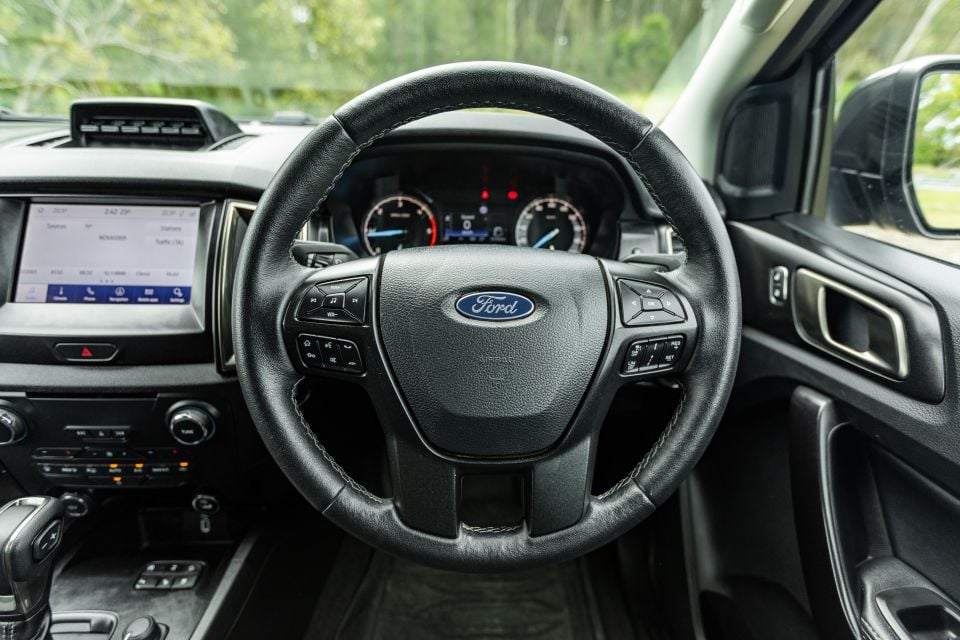
Externally, the FX4 Max gets unique side steps and blacked-out sports bars, along with a Raptor-style grille and wheel arch mouldings, while inside there’s suede-like upholstery with leather bolsters.
You can also get it with these lurid tape stripes, which make it look like an American Ford pickup from the 1970s. I can dig it, but do you think they’re groovy or a bad trip?
Ford has revealed the initial line-up of the redesigned Ranger but the FX4 Max variant isn’t part of it. That said, it’s entirely possible a quasi Raptor-lite model could eventually show up. After all, this one showed up in the current model’s twilight years.
The FX4 Max may be one of the newest members of the soon-to-be old Ranger line-up, but is the current vehicle still worth a look or should you wait for the next-generation model?
The Ranger FX4 Max is priced at $66,190 before on-road costs, essentially lineball with the more luxury-focused Wildtrak and around $13,000 less than a Ranger Raptor X.
You could argue the utes gunning for the Ranger Raptor X also serve as competition for the FX4 Max, given it’s not just an appearance package like the Nissan Navara Pro-4X, Mazda BT-50 Thunder or Toyota HiLux Rogue and instead packs a range of mechanical enhancements.
That means it goes up against the HiLux Rugged X ($70,750) and Navara PRO-4X Warrior ($69,990).
Our model came with the optional Tech Pack ($550) that adds semi-autonomous parking assist, which is useful, and the FX4 Max Decal Set ($750) that adds those tape stripes, which are less useful.
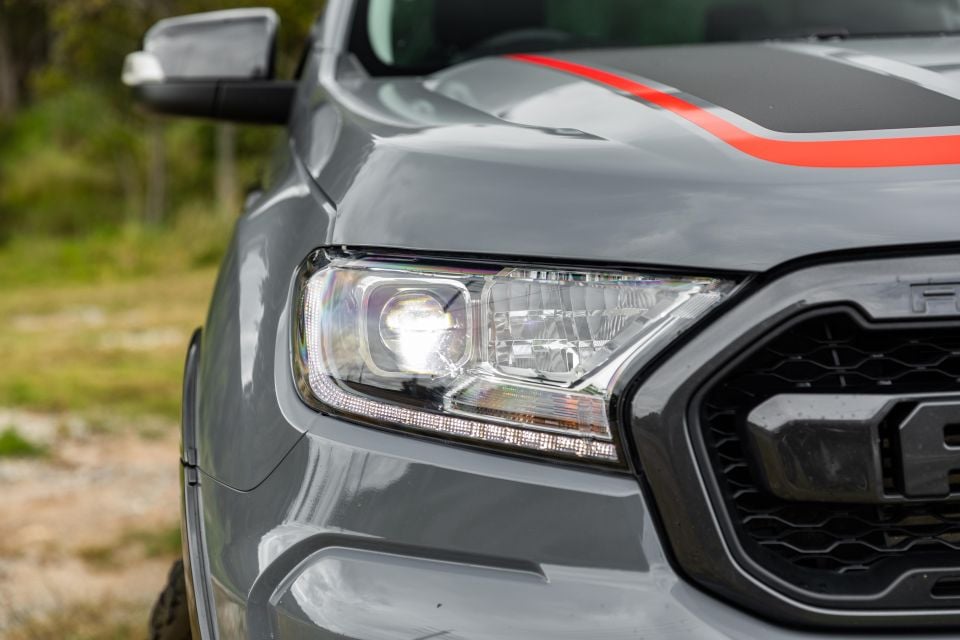
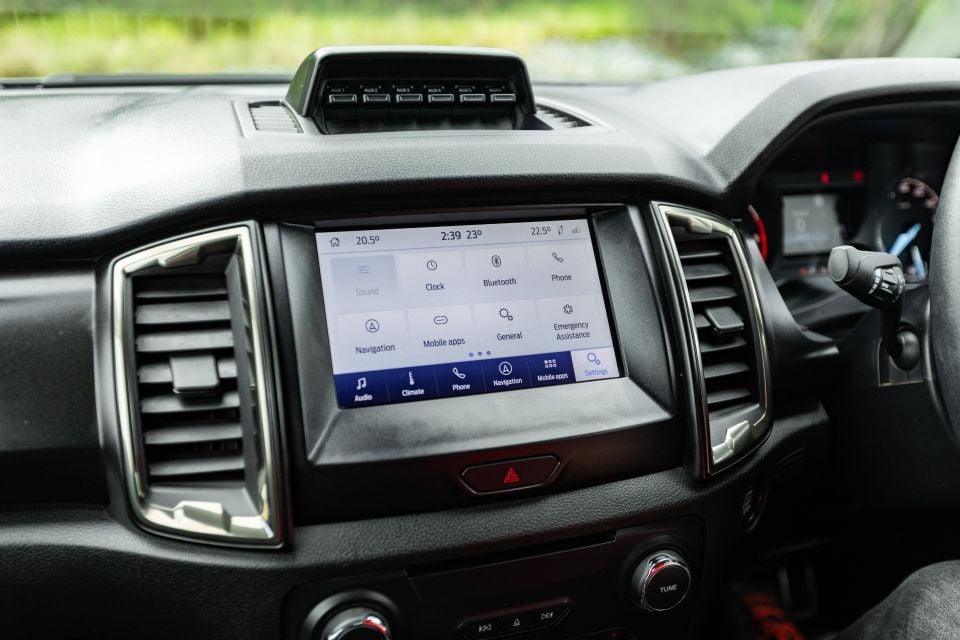
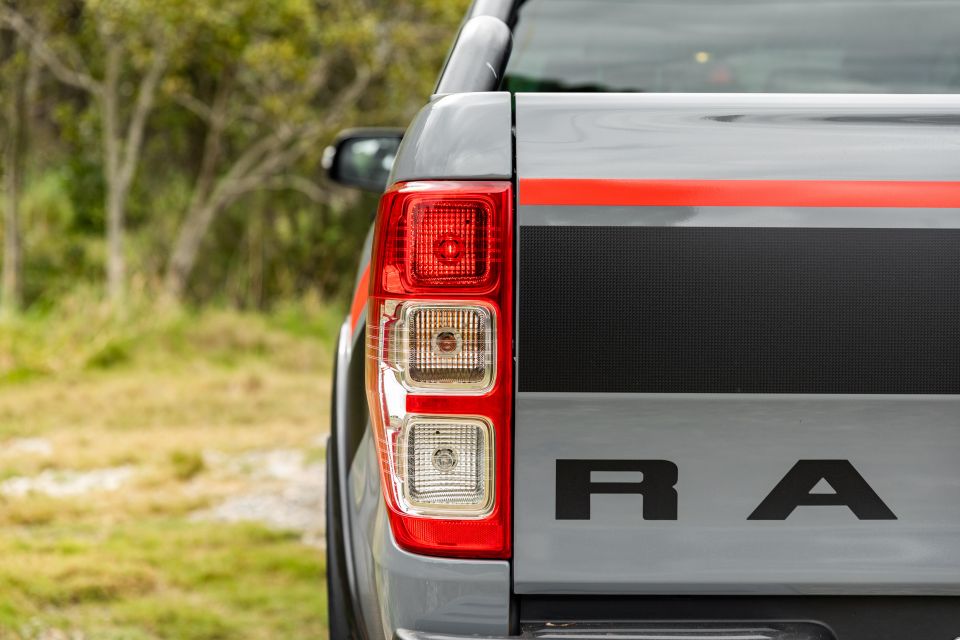
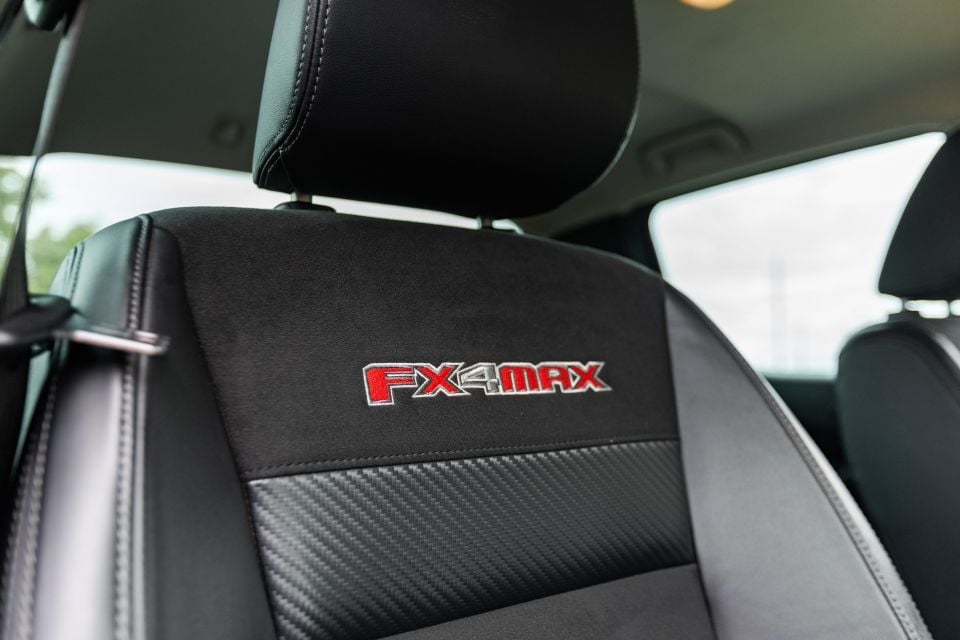
Buy your new car without the stress. It's fast, simple and completely free.

Great service from Travis and team, second time I have used this business would not hesitate to recommend them to anyone
Craig C.
Purchased a Ford Ranger in Sunshine Coast, QLD
CarExpert helped Craig save thousands on his Ford Ranger, now let us save you on your next new car.
Find a dealIn addition to the enhancements outlined earlier, the Ranger FX4 Max offers the following standard features:
There’s tilt adjustment for the steering wheel but no reach adjustment, a bugbear we’ve long had with the Ranger. Other features you might expect to see but which are missing include power-adjustable front seats and paddle shifters.
You do get FordPass Connect, which allows you to do things like lock or unlock the vehicle and check its fuel levels or location using a smartphone app. That’s a level of connectivity you won’t find in rival trucks.
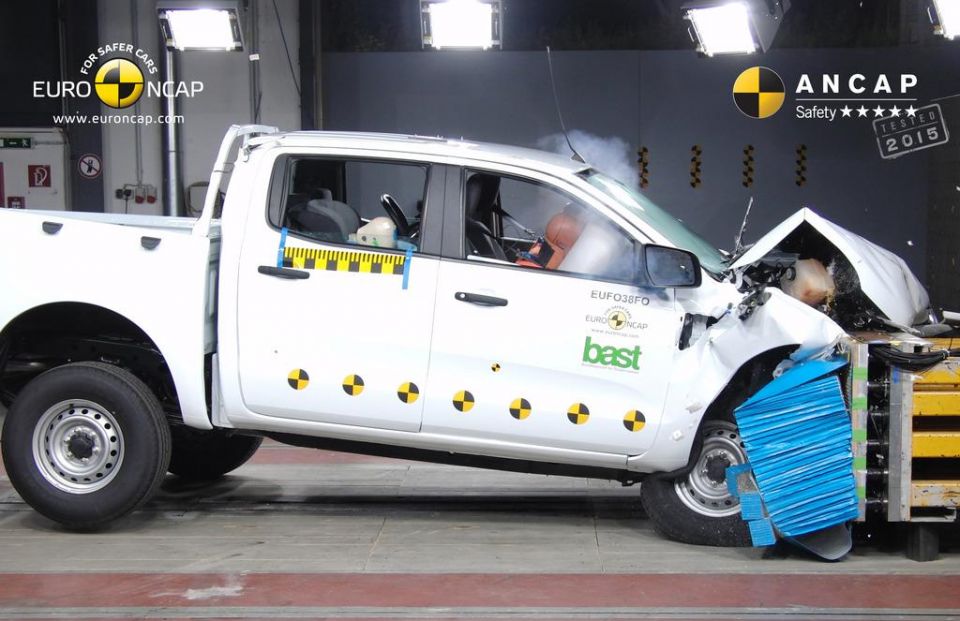
When the Ford Ranger was tested by ANCAP in 2015, it received a rating of five stars.
That rating was based on a frontal offset score of 15.72 out of 16 and a side impact score of 16 out of 16. Whiplash and pedestrian protection were rated Good and Acceptable, respectively.
It does come standard with the following safety features:
You also don’t get blind-spot monitoring or rear cross-traffic alert, features becoming increasingly common in this segment. That makes the FX4 Max’s safety suite considerably less comprehensive than that of, for example, the Navara PRO-4X Warrior or any BT-50 or D-Max.
There’s also adaptive cruise control, which isn’t available on the Raptor X.
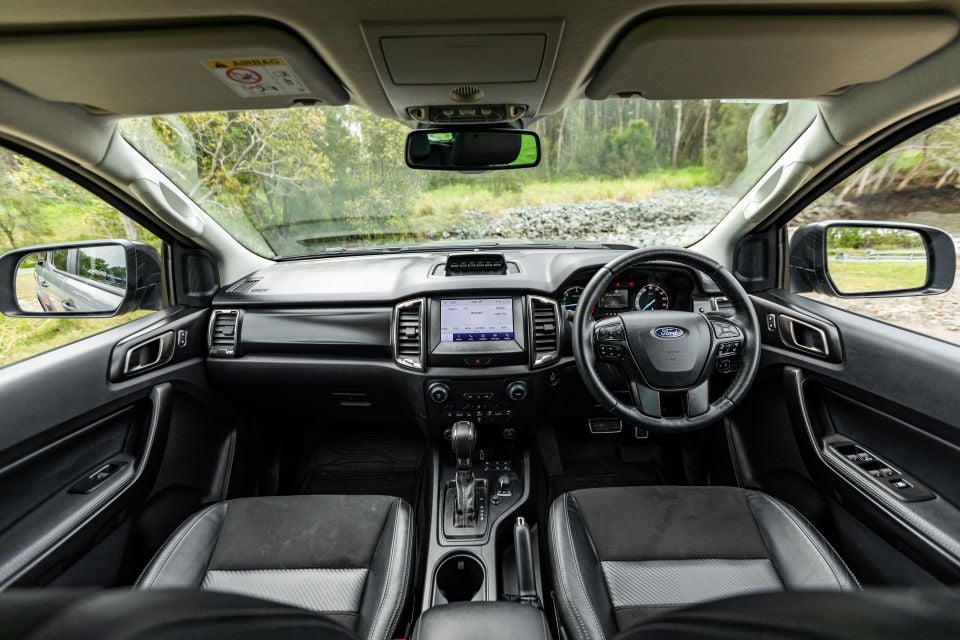
The ute segment evolves slowly, which is why what’s essentially a six-year old interior in a circa-$70k vehicle still passes muster in the Ranger FX4 Max.
The interior received a huge overhaul for 2015 and it’s held up well since then, helped by one of the better infotainment systems in this class. The 8.0-inch unit mightn’t be the biggest anymore but Ford’s Sync system is responsive and easy to use, with shortcuts to different menus at the bottom of the screen. It also allows for software updates that’ll help keep it fresh.
There’s standard satellite navigation, with clear and legible maps, while there’s also wired Android Auto and Apple CarPlay. We experienced a litany of problems connecting to Android Auto on our first day with the car, but this somehow fixed itself entirely on day two leaving us none the wiser as to whether the issue was down to the phone, cable, or infotainment system.
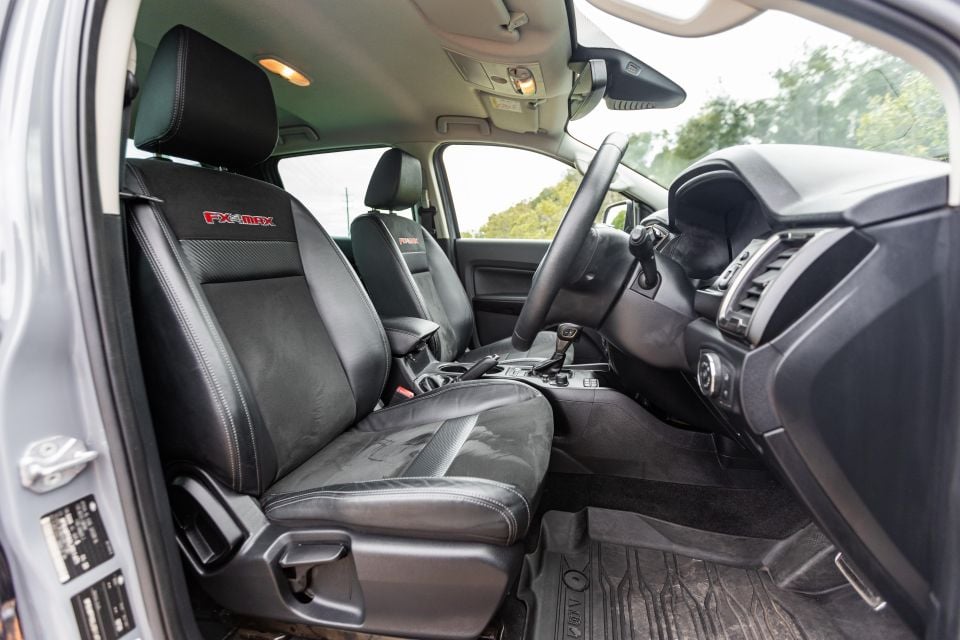
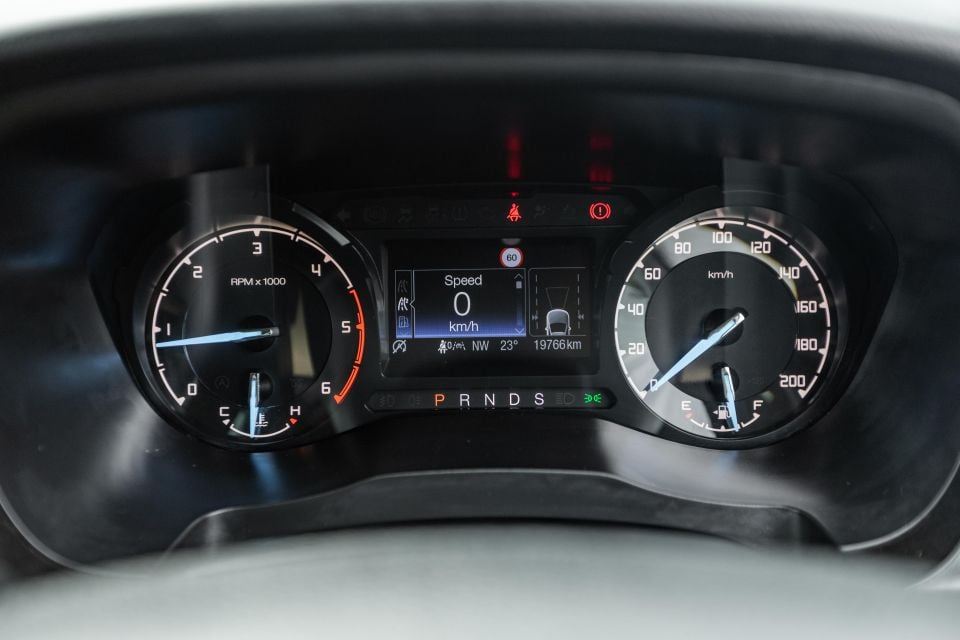
Move further down and you’ll find physical buttons and dials for the sound system and climate control, while underneath these are two protruding power outlets: one a 12V, one a USB-A.
There’s a small, scooped shelf at the base of the centre stack with a USB-A outlet, which would be an ideal spot for your mobile phone or other items if it was rubberised. The 4WD mode dial is located next to the shifter, while there’s an assembly of buttons for disparate functions – the locking rear differential, for example, along with the park assist system and others.
Slippery shelf aside, storage up front is good. The centre console bin is split-level and impressively deep, while the bottle holders in the doors are big enough to fit 1L bottles – that goes for the rear ones, too. The glove box is big, though there’s no “bonus” glove box like you’ll find in an Isuzu D-Max. Finally, there’s a roof-mounted sunglass holder that isn’t just unfinished plastic inside, with a spongy lining.
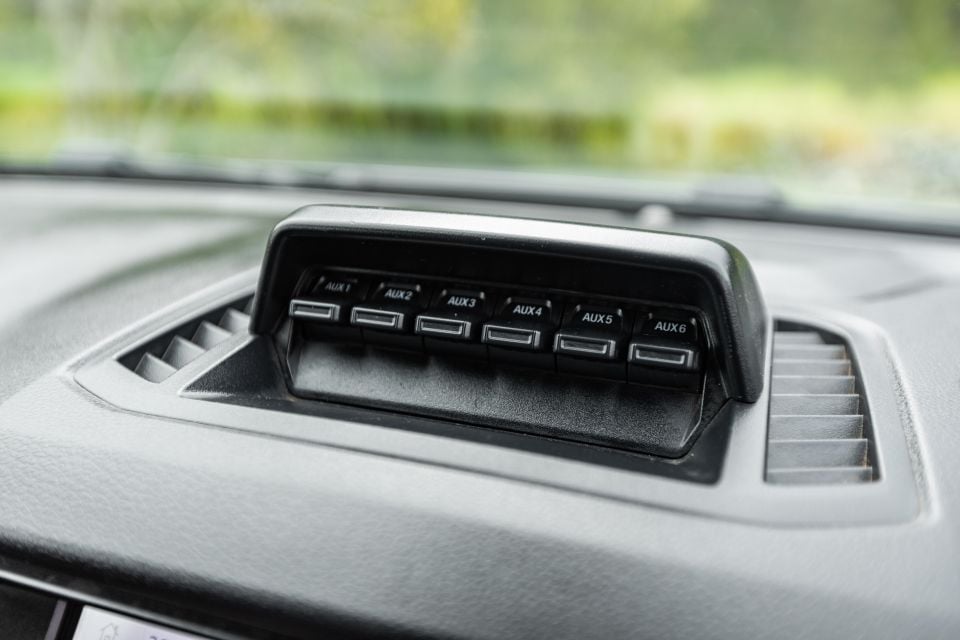
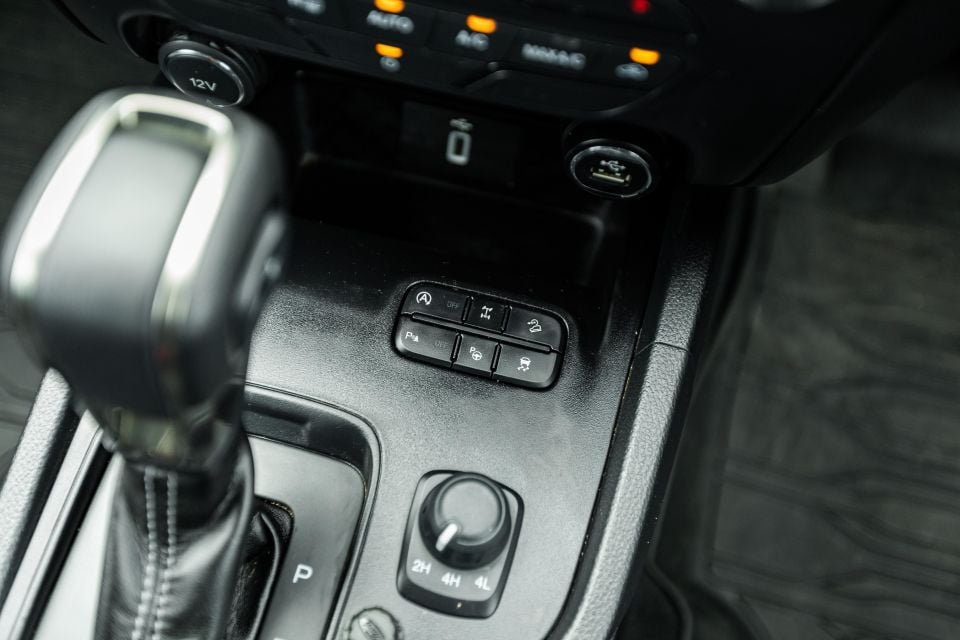
Atop the dashboard you’ll find a row of six AUX switches which you can use if you wire in items like light bars, air compressors and winches. These can then be run off the car’s 250A alternator and battery. There’s also a USB-A outlet near the rear-view mirror that can be used for plugging in a dashcam.
Perhaps the most attractive part of the cabin is the instrument cluster. The analogue dials look upmarket, with elegant fonts and striking blue needles. These flank a 4.2-inch screen that can display fuel economy data, driver assist information, and a digital speedometer.
You won’t find a padded dash top like you will in, say, an up-spec D-Max – we wonder why not, considering the Everest’s almost identical dashboard has one. The FX4 Max also uses a large, black plastic insert across the dash, which eliminates the nice contrast you’ll find on variants like the XLT where this trim is lighter. In all, the cabin is very black.
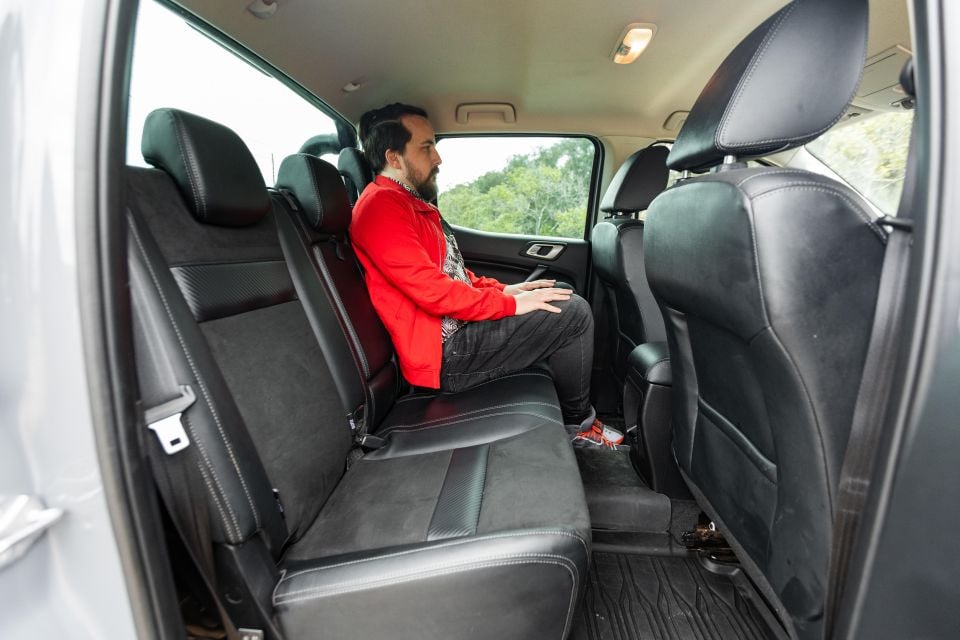
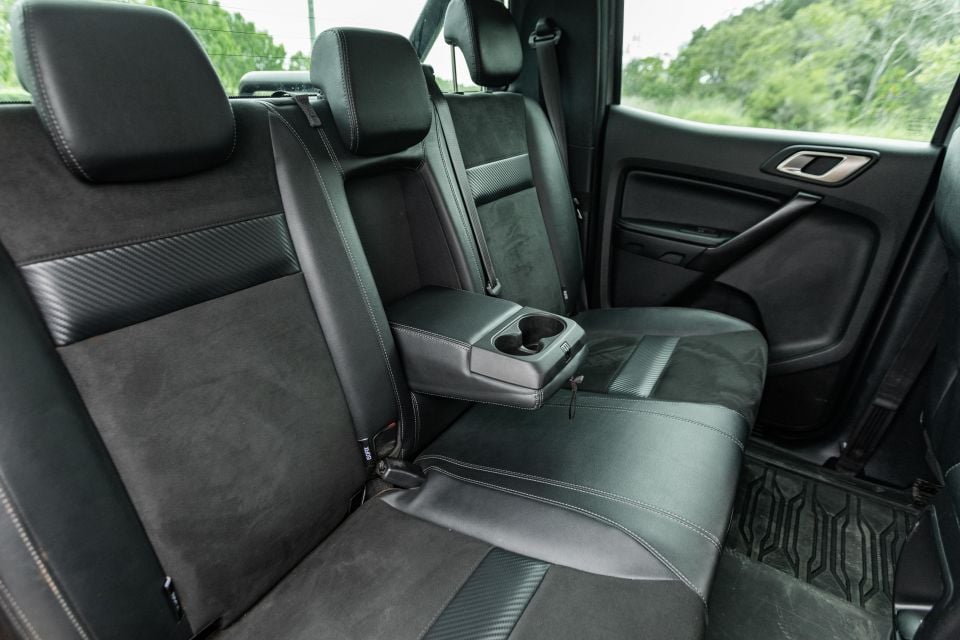
The interior is well screwed together and hard-wearing with one exception. That’s the suede-look inserts, a peculiar addition for what’s supposed to be a more rugged model intended for off-roading.
Our test car seemed to be almost a day away from retirement with almost 20,000km on the odometer, and the upholstery gave us the distinct impression it might not wear as well as simple cloth or even leather upholstery. It also just looks dirtier easier – why wouldn’t Ford just use some upholstery that’s harder-wearing and easier to wipe clean?
The side steps make stepping up into the FX4 Max’s higher cabin easy, and the rear of the cabin is spacious. There’s ample headroom, legroom and toe room for someone 180cm tall sitting behind someone of a similar height.
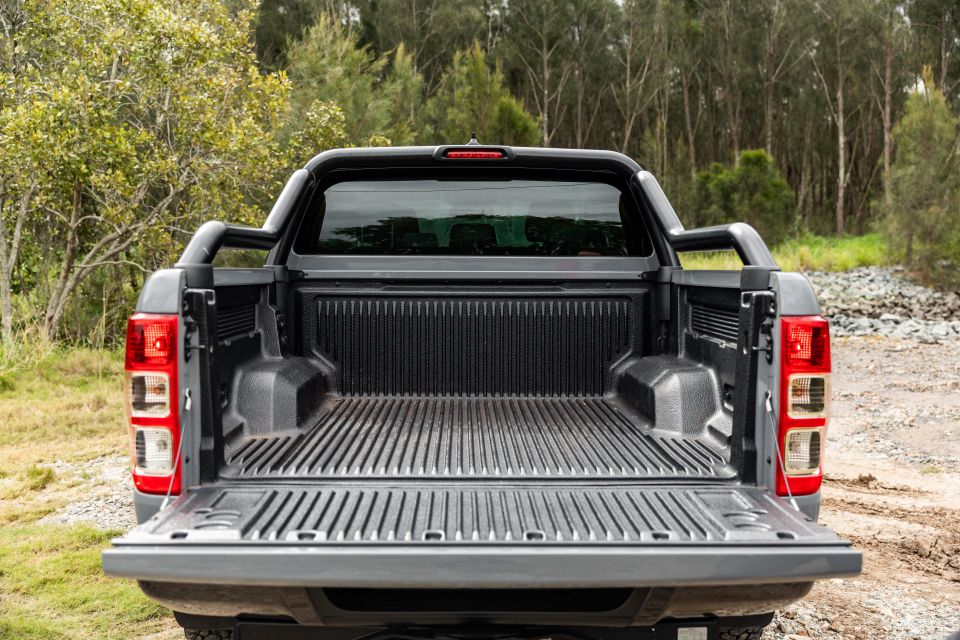
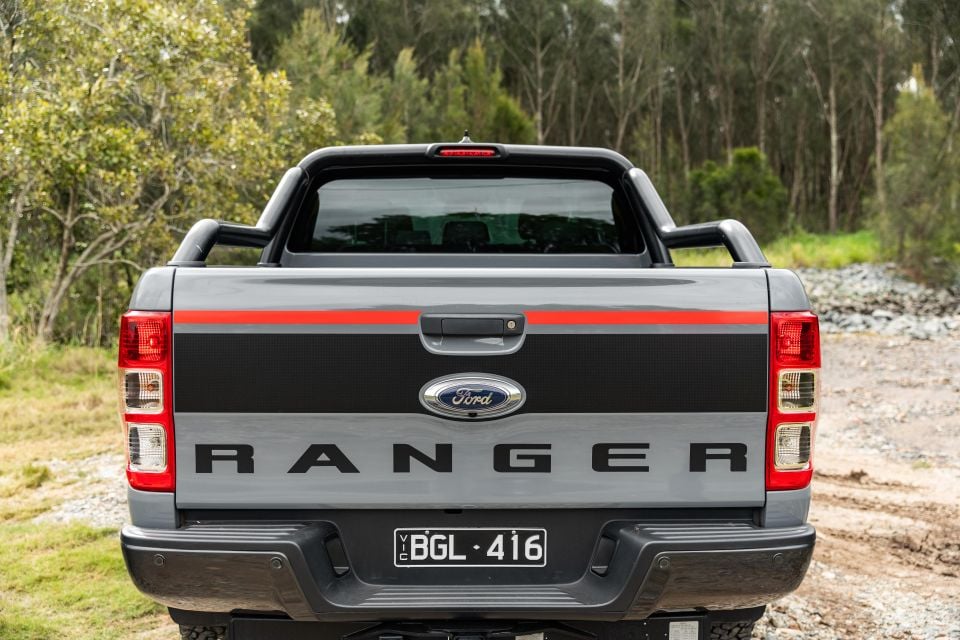
Underneath the second row are a pair of storage areas, while the second-row seat back also hides the jack and two top-tether points for child seats. There are two ISOFIX anchor points back here too.
Rear-seat passengers have a fold-down centre armrest with cupholders and soft front seatbacks with map pockets, while there are both 12V and 230V outlets at the base of the centre console. Alas, that’s it for charging outlets – you won’t find any USB outlets back here, and you won’t even find air vents.
Ford does offer one type of outlet missing from many rivals, and that’s a 12V outlet in the tub. Load length is 1549mm and load width is 1560mm, or 1139mm between the arches.
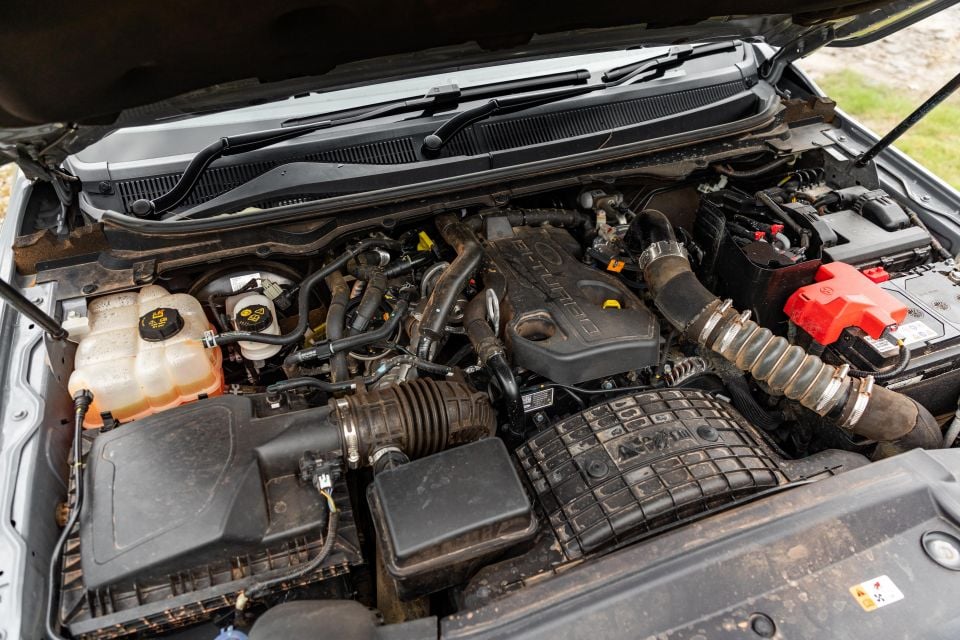
The FX4 Max is powered by a 2.0-litre four-cylinder bi-turbo diesel producing 157kW of power and 500Nm of torque.
It’s mated with a 10-speed automatic transmission and four-wheel drive. Unlike many other Ranger variants, there’s no way to get the FX4 Max with a manual and the 3.2-litre turbo-diesel five-cylinder.
Those outputs are at the pointy end of the segment. The Isuzu D-Max and Mazda BT-50 twins pump out 140kW and 450Nm, most HiLux models including the Rugged X produce 150kW and 500Nm, while up-spec Navaras like the PRO-4X Warrior put out 140kW and 450Nm.

Only two rivals best the Ranger in outputs. The cheaper LDV T60 now produces 160kW and 500Nm, while the Volkswagen Amarok features a zesty turbo-diesel V6 in three different tunes ranging from 165kW/500Nm to 190kW/580Nm.
While braked towing capacity is identical to the XLT at 3500kg and 1000kg higher than the Raptor X, payload is down slightly from the XLT’s 1003kg figure at 981kg.
That means you can haul more than a Raptor X (714kg), a Navara PRO-4X Warrior (961kg) and a HiLux Rugged X (734kg).
Gross vehicle mass is 3250kg, against 3090kg for the Raptor X, 3200kg for the Navara, and 3050kg for the HiLux.

The Ranger may be at the end of its lifecycle but it’s impressive how well it still stacks up on the road, even against newer rivals.
The FX4 Max is the second most overtly off-road-oriented model in the line-up so, driven back-to-back with, for example, a Ranger XLT, you’ll likely notice some key differences. The ride quality isn’t quite as plush as that of the XLT, while the tyres are definitely noisier at high speeds.
In isolation, however, the FX4 Max stands its own. Ride quality is still broadly competent, with a comfortable, composed ride on most urban surfaces while unladen. Even on more pockmarked urban streets, ruts and imperfections don’t jolt the chassis and body control remains sound.
If your commute involves heavily rutted, corrugated rural roads, however, this is when you’ll notice ride quality isn’t quite as good as the XLT, with harsher impacts and more jiggles. The flip-side of that is the Fox shocks are better suited at giving the FX4 Max a comfortable ride off the beaten track at high speeds.
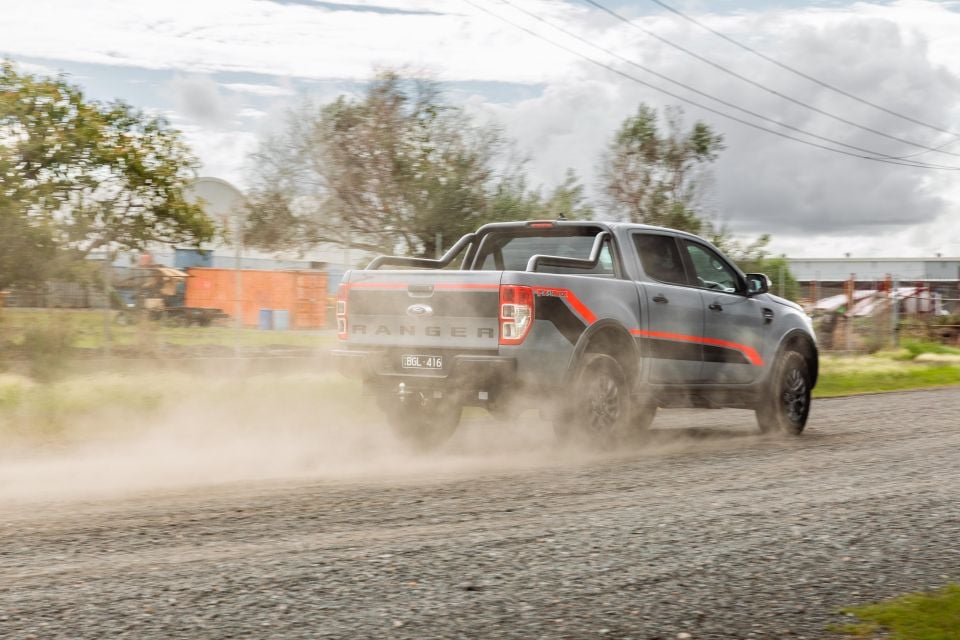
Where expert car reviews meet expert car buying – CarExpert gives you trusted advice, personalised service and real savings on your next new car.
The off-road tyres start to make a bit of noise around 80km/h and are most noticeable at highway speeds, where they transmit a strange, ethereal noise. Nevertheless, we’ve heard noisier – the Jeep Gladiator Rubicon’s come to mind – and other noises, like that from the wind, are largely kept from intruding into the cabin.
The Ranger’s typically excellent steering is largely unmarred. It’s nice and meaty, with good weighting and road feel. The wheel itself feels nice and chunky, too. The off-road enhancements don’t mar the Ranger’s handling, either – it still feels solid and composed, with body roll kept largely under control. This remains one of the better utes to steer.
When it comes to a 4WD trail, I’m no Simon Christie. Fortunately, we had Simon, our off-road editor, take the FX4 Max off the beaten track last year. He found its off-road chops to be superior to those of lesser Rangers, though he also flagged those side steps, while a boon for cabin accessibility, are a liability off-road.
This is a well-sorted powertrain, too. While 10 speeds can be a recipe for chronic gear-hunting, the Ranger’s 10-speed auto shifts smoothly and feels well-matched to the 2.0-litre bi-turbo.
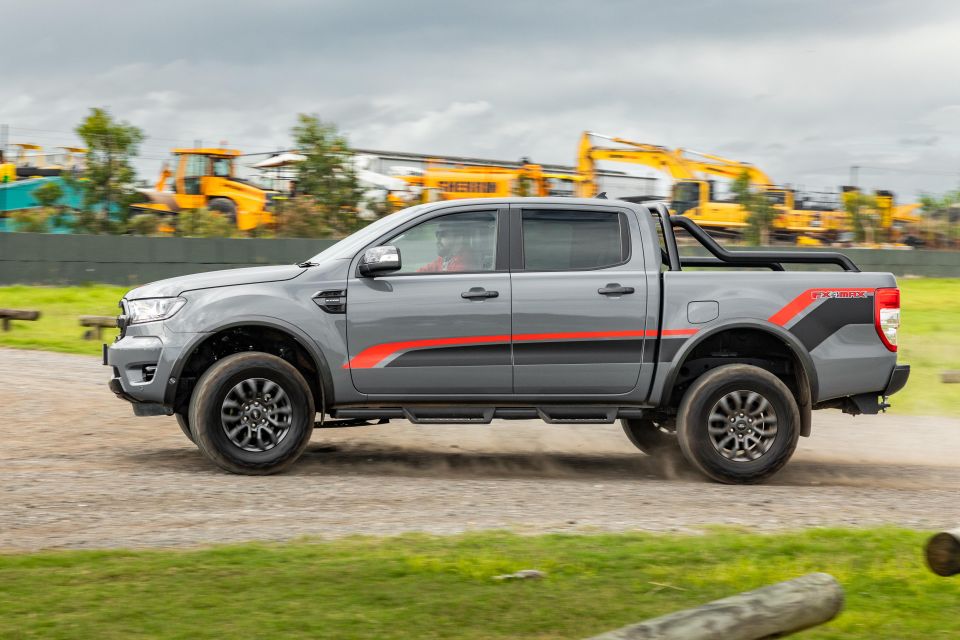
We’ve previously clocked a 0-100km/h time of just 8.3 seconds. This is one of the gruntiest powertrains in this segment, not only on paper but in real-world driving, but we can’t say we’re not excited about the next-generation model’s turbo-diesel V6.
You may never want to change gears manually in the FX4 Max, but should you be in the mood, there are no paddle shifters. Instead, there are awkward plus and minus signs on the side of the shifter.
The Ranger has idle stop/start, which is certainly a polarising feature – many consumers believe this leads to unnecessary wear and tear and don’t like the way it feels. Indeed, it does send a shudder through the structure of the FX4 Max.
Personally, I’m glad to do my part in cutting the sound of idling turbo-diesel four-cylinder engines, which are as obnoxious to listen to from the outside as lawnmowers. Fortunately, the sound of the Ranger’s diesel mill is relatively deadened from inside the cabin, at least to a similar level as the likes of a D-Max.
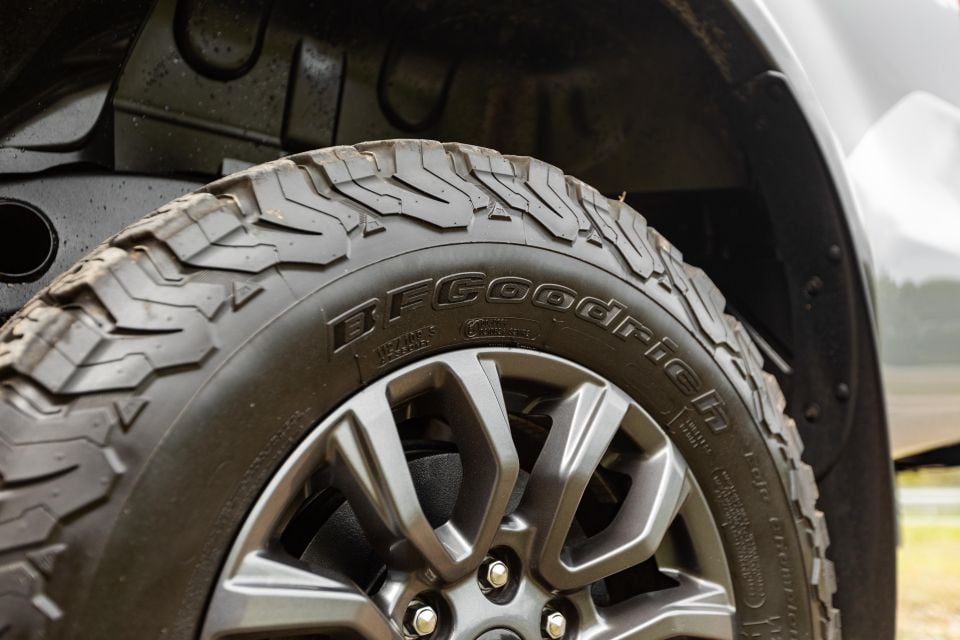
Over a loop comprising inner-city, suburban and highway driving, we averaged 10.1L/100km and by the end of our week with it, it had ended up right back at 10.1L/100km. Ford claims a combined fuel economy rating of 8.0L/100km.
All 2022 Ford Ranger models require servicing every 12 months or 15,000km, whichever comes first.
In addition to its five-year, unlimited-kilometre warranty, Ford offers 10 years of capped-price servicing for the Ranger.
The first four years or 60,000km of services are capped at $299 each, some of the most affordable service prices in this segment. While a HiLux’s first four services cost between $200 and $250, it has shorter servicing intervals of six months or 10,000km.
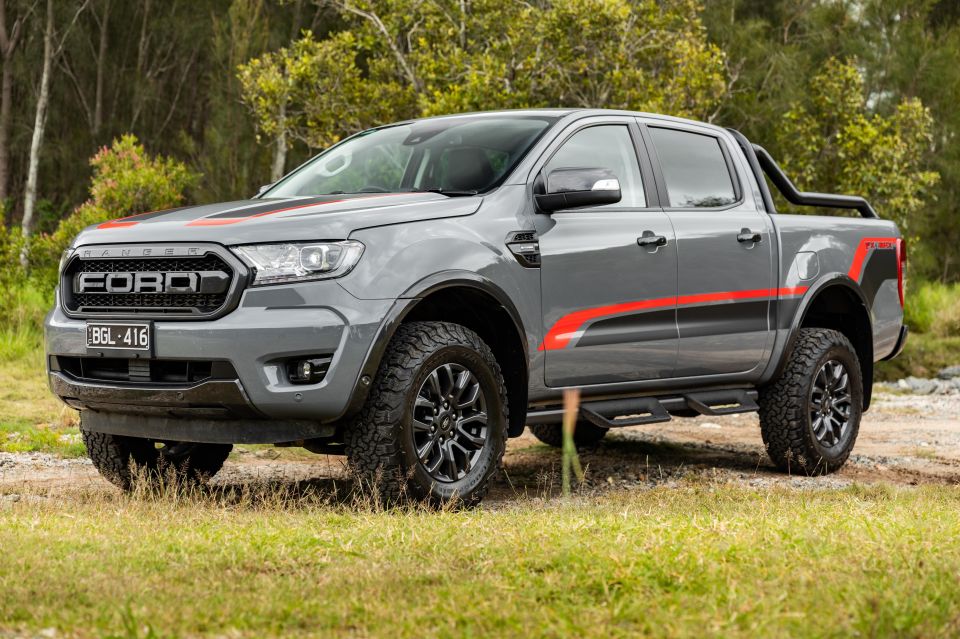
It’s right there in the name: FX4 Max. This isn’t the same kind of holistic enhancement of a Ranger that a Raptor X is, and instead this is a beefed-up Ranger FX4 or XLT.
We reckon it splits the difference nicely between the FX4 and the Raptor X, however, by building on the former’s off-road ability while besting the latter in payload and towing capacity and undercutting it by over $10,000. The trade-off is a ride that can’t match that of either an FX4 or a Raptor X.
For a very specific group of buyers, then, the FX4 Max will make a lot of sense, and it helps that it’s considerably cheaper than a Raptor X.
If you don’t plan on doing any serious off-roading, though, we’d steer you towards the XLT, FX4 or Wildtrak, which offer better on-road manners and can still tackle the rough stuff.

Click the images for the full gallery
MORE: Everything Ford Ranger
Where expert car reviews meet expert car buying – CarExpert gives you trusted advice, personalised service and real savings on your next new car.
William Stopford is an automotive journalist with a passion for mainstream cars, automotive history and overseas auto markets.


Ben Zachariah
6 Hours Ago


Matt Campbell
13 Hours Ago


Derek Fung
4 Days Ago


Damion Smy
7 Days Ago


Ben Zachariah
9 Days Ago


James Wong
15 Days Ago